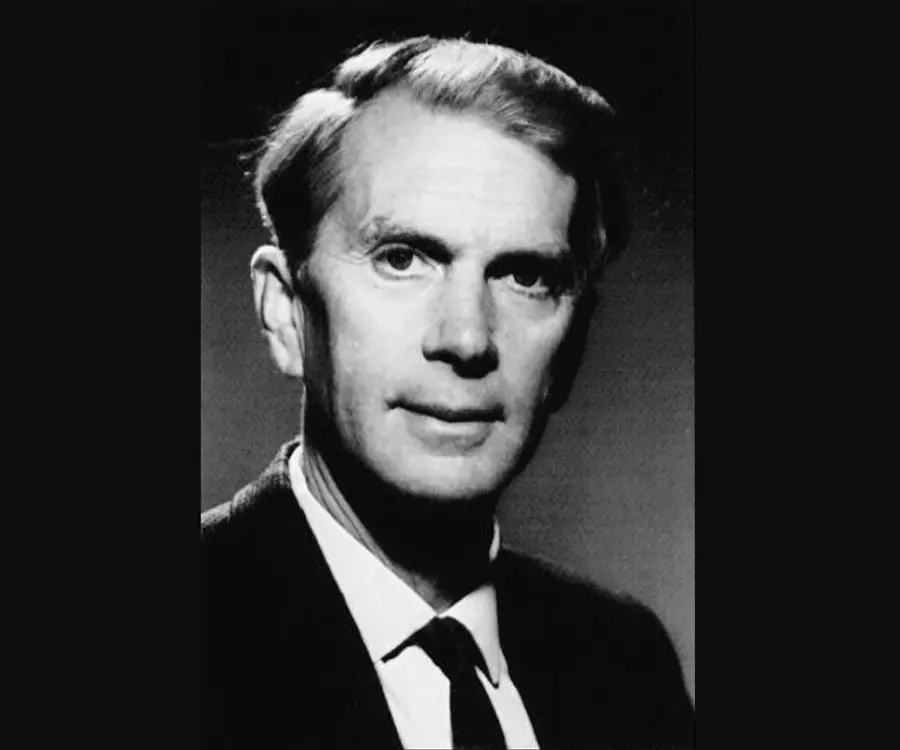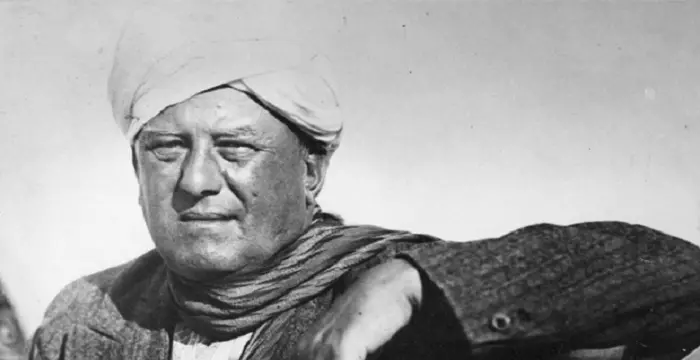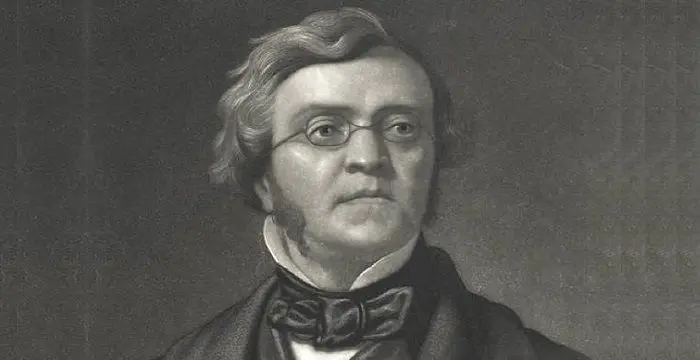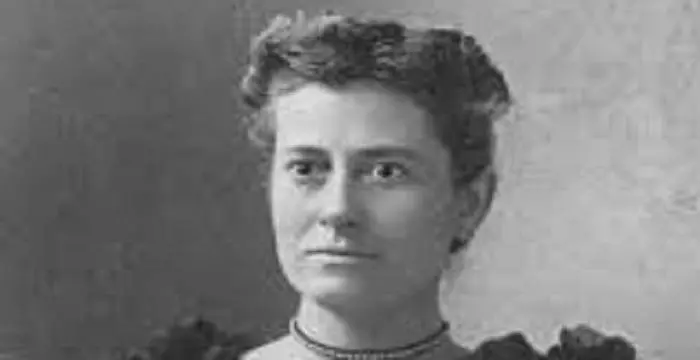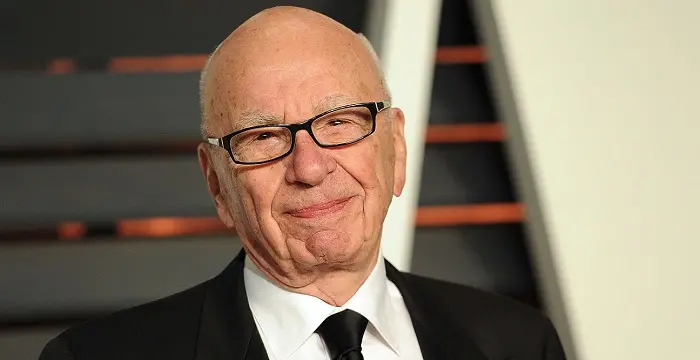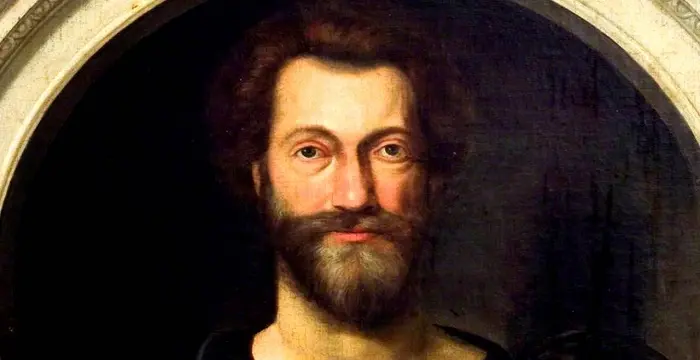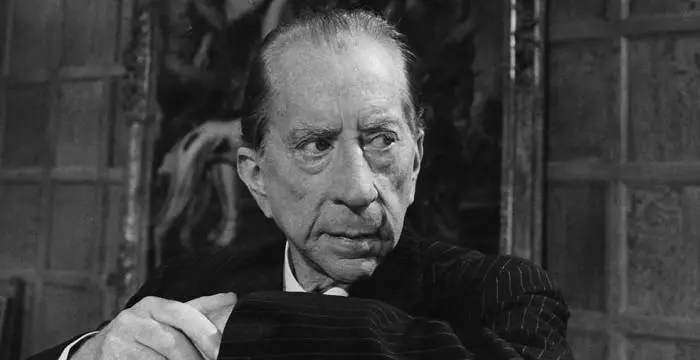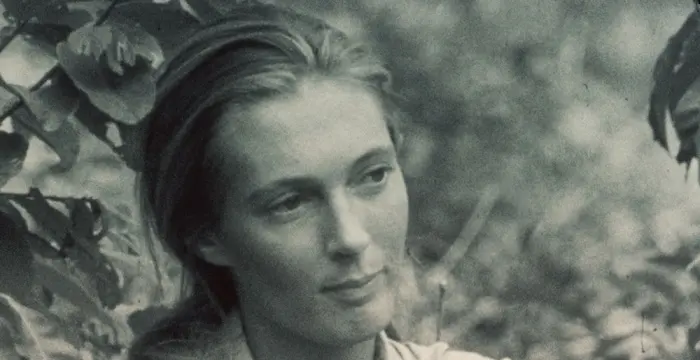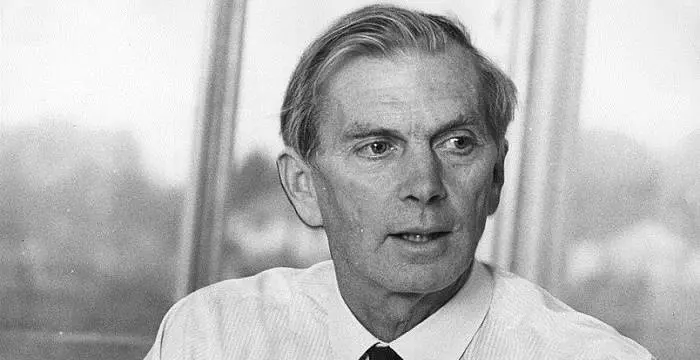
Martin Ryle - Trinity College, Cambridge, Family and Personal Life
Martin Ryle's Personal Details
Sir Martin Ryle was a British astronomer who was one of the joint winners of Nobel Prize for Physics in 1974
| Information | Detail |
|---|---|
| Birthday | September 27, 1918 |
| Died on | October 14, 1984 |
| Nationality | British |
| Famous | Oxford University, Trinity College, Cambridge, Scientists, Astronomers, Physicists |
| Universities |
|
| Notable Alumnis |
|
| Birth Place | Brighton |
| Gender | Male |
| Sun Sign | Libra |
| Born in | Brighton |
| Famous as | Astronomer |
| Died at Age | 66 |
// Famous Scientists
Juliane Koepcke
Juliane Koepcke is a German-Peruvian biologist, who was the lone survivor among the 92 passengers and crew of the ill-fated LANSA Flight 508 that crashed in the Peruvian rainforest on 24 December 1971. Know more about her life in this biography.
Henry Cavendish
Henry Cavendish was a theoretical chemist and physicist, renowned for discovery of hydrogen and calculation of the mass of earth. To know more about his childhood, profile, timeline and career read on
Konstantin Tsiolkovsky
Konstantin Tsiolkovsky was a Russian rocket scientist and a pioneer of astronautics. This biography provides detailed information about his childhood, family, personal life, career, achievements, etc.
Martin Ryle's photo
Who is Martin Ryle?
Sir Martin Ryle was a British astronomer who was one of the joint winners of Nobel Prize for Physics in 1974. Educated first at Bradfield College, he completed his graduation in physics from Christ Church College under University of Oxford. Later, he did his PhD under the guidance of John Ashworth Ratcliffe. However, before he could do that the World War II broke out and he joined Telecommunication Research Establishment to work on airborne radar system. Very soon he began to lead a group of scientists and those who worked with him remembered him for his extraordinary inventiveness and understanding. After the war, he received Fellowship from Imperial Chemical Industries and joined Ratcliffe at the Cavendish Laboratory, Cambridge. Although he started his work on radio waves coming from the sun he soon shifted focus and concentrated on developing revolutionary radio telescope systems. Within a few years, he was first appointed to the post of Lecturer at the Cambridge University and then to the newly created Chair of Radio Astronomy. All along he led research teams from the front and devised increasingly efficient aperture synthesis. With them, he and his team could watch distant galaxies and discovered the first quasar and the first pulsar.
// Famous Trinity College, Cambridge
Isaac Newton
Isaac Newton was an English scientist and mathematician, who discovered gravitation and Newtonian Mechanics. Read this biography to find more on his life.
Aleister Crowley
Aleister Crowley was an occultist and ceremonial magician who founded the ethical philosophy of Thelema. This biography of Aleister Crowley provides detailed information about his childhood, life, achievements, works & timeline.
William Makepeace Thackeray
William Thackeray was an English novelist and satirist. Read this brief biography to find more on his life & timeline.
Childhood & Early Years
Martin Ryle was born on 27 September 1918, in Sussex. His father, John Alfred Ryle, was a well-known physician and epidemiologist. Later, he was appointed to the first Chair of Social Medicine at Oxford University. His mother‘s name was Miriam (née Scully) Ryle. His uncle, Gilbert Ryle, was also a distinguished philosopher.
Martin was the second child of his parents. He had four siblings; two brothers and two sisters. All the five siblings had their early education under a governess. Later Martin was admitted to Gladstone’s Preparatory School in Eaton Square, London.
At the age of thirteen, Martin was sent to Bradfield College, a boarding and day school in Bradfield in the county of Berkshire, and passed out from there in 1936. Here, he developed an interest in radio engineering. Sometime now, he not only built his own radio transmitter, but also acquired a post office license for it.
In 1936, Martin enrolled at Christ Church, a constituent college under the University of Oxford, with physics as his major. Here too he retained his interest in radio engineering and set up the university amateur radio station together with his fellow students. He graduated from there in 1939.
Career
In 1939, Martin Ryle briefly joined ionospheric research group at the Cavendish Laboratory at Cambridge University under J. A. Ratcliffe. However, the Second World War started soon after and with that Martin shifted to Telecommunication Research Establishment, which was working on radar system for R.A.F.
For the first two years, Ryle worked on the antennas for airborne radar equipment. Later, he was shifted to newly formed Radio Countermeasures Division. Here the main task was to jam transmitters against the German radar defense system and to devise radio-deception operations.
It may be noted that because of their work, Germany thought that the D-Day invasion would take place across the Strait of Dover, not at Normandy. Indeed, Ryle and his team had to work under a very stressful condition, having to find many immediate as well as practical solutions for tackling tricky situations.
During this period, the team also detected vulnerability in the Germany’s V-2 rocket radio guidance system. Very quickly, they developed a system through which the accurate aims of these rockets could be greatly disrupted, thereby reducing their harmful effects to a large extent.
About his war experience, Ryle later said that it helped him to learn many things about engineering and to understand and motivate people. At the same time, it also made him forgot all that he had learned about physics.
Nonetheless, as the war ended in 1945, Ryle, on the advice of J. A. Ratcliffe, applied for a fellowship and joined his group at Cavendish Laboratory. He now started his research on the radio emission from the sun, a phenomenon, which had been accidentally discovered with help of the radar equipments.
It happened that during the war some unknown radio emissions from cosmic sources had interfered with the anti-aircraft radars. Later, it was found that the jamming was caused by radio emissions from the sun. The available apparatus of that time was not sufficient for investigating such phenomena.
Soon after joining the project, Ryle concentrated on developing more powerful aperture synthesis. In this, he was encouraged by J. A. Ratcliffe and Sir Lawrence Bragg. Ultimately in 1946, Ryle and his team built the first multi element astronomical radio interferometry.
in 1948, Ryle was appointed to the post of lecturer at the University of Cambridge. At the same time, he continued working in the same direction and over a period of 25 years developed a series of astronomical interferometry with increasing complexity and efficiency.
At the same time, he concentrated on producing reliable catalogue of all bright radio sources in the northern sky. While the First Cambridge Catalogue was published in 1950, the second one was published in 1954. Later these findings were revised several times.
In 1957, Ryle became the founding Director of Mullard Radio Astronomy Observatory. Next in 1959, he was made a full professor in radio astronomy in the Cavendish Laboratory. In the same year, his team published the Third Cambridge Catalogue and discovered the first quasi-stellar source or quasar.
Major Works
The invention of a more effective aperture synthesis in 1960s is definitely the biggest achievement OF Martin Ryle and his team. His team placed two telescopes at certain distances and by changing the distance between them and analyzing the results through computers, they received better and better resolving power.
In mid 1960s, they placed the two telescopes at a maximum distance of 1.6 km and found that a single telescope with 1.6 km diameter would give the same result. In 1967, Anthony Hewish and Jocelyn Bell of the Cambridge group used this principle to locate the first pulsar.
Awards & Achievements
In 1974, Martin Ryle and Antony Hewish were jointly awarded with Nobel Prize in Physics “for their pioneering research in radio astrophysics: Ryle for his observations and inventions, in particular of the aperture synthesis technique, and Hewish for his decisive role in the discovery of pulsars".
He was also made a Knight Bachelor in 1966 and Astronomer Royal in 1972.
Personal Life & Legacy
In 1947, Martin Ryle married Ella Rowena Palmer; sister-in-law of fellow astronomer Sir Francis Graham-Smith. The couple had two daughters, Alison and Claire, and a son named John.
They had a wonderfully happy marriage. The family enjoyed sailing and owned number of boats. Two of the boats were designed and built by Ryle himself.
Ryle was active till his end. He died on 14 October 1984, at the age of 66, at Cambridge.
Ryle Telescope, located at Mullard Radio Astronomy Observatory, was renamed after Martin Ryle. Formerly known as 5-km Array, it was made up of eight independent telescopes placed in east-west direction operating at 15 GHz. However, in 2004, three of the telescopes have been relocated to create a compact two dimensional array of telescopes at the east end of the interferometer.
Trivia
From the beginning of 1970s, Ryle began to concentrate more on social issues and advocated more responsible use of science and technology. ‘Towards Nuclear Holocaust’, ‘Is There a Case for Nuclear Power?’ written during this period show his aversion to war and destruction.
’Short-term Storage and Wind Power Availability’, a book on alternative energy also shows his concern for environment. In this book, he had suggested that wind power along with short-term thermal storage can provide an attractive source of energy in the United Kingdom.
// Famous Astronomers
Jabir Ibn Hayyan
Jabir Ibn Hayyan was a medieval era polymath. Check out this biography to know about his life, works and achievements.
Isaac Newton
Isaac Newton was an English scientist and mathematician, who discovered gravitation and Newtonian Mechanics. Read this biography to find more on his life.
Henrietta Swan Leavitt
Henrietta Swan Leavitt was an American astronomer. Check out this biography to know about her childhood, family, personal life, discoveries, achievements, etc.
Martin Ryle's awards
| Year | Name | Award |
|---|---|---|
Other | ||
| 1964 | Gold Medal of the Royal Astronomical Society | |
| 1954 | Hughes Medal | |
| 1965 | Henry Draper Medal | |
| 1971 | Faraday Medal | |
| 0 | 1974 - Nobel Prize in Physics | |
| 0 | 1974 - Bruce Medal | |
| 0 | 1973 - Royal Medal | |
Martin Ryle biography timelines
- // 27th Sep 1918Martin Ryle was born on 27 September 1918, in Sussex. His father, John Alfred Ryle, was a well-known physician and epidemiologist. Later, he was appointed to the first Chair of Social Medicine at Oxford University. His mother‘s name was Miriam (née Scully) Ryle. His uncle, Gilbert Ryle, was also a distinguished philosopher.
- // 1936At the age of thirteen, Martin was sent to Bradfield College, a boarding and day school in Bradfield in the county of Berkshire, and passed out from there in 1936. Here, he developed an interest in radio engineering. Sometime now, he not only built his own radio transmitter, but also acquired a post office license for it.
- // 1936 To 1939In 1936, Martin enrolled at Christ Church, a constituent college under the University of Oxford, with physics as his major. Here too he retained his interest in radio engineering and set up the university amateur radio station together with his fellow students. He graduated from there in 1939.
- // 1939In 1939, Martin Ryle briefly joined ionospheric research group at the Cavendish Laboratory at Cambridge University under J. A. Ratcliffe. However, the Second World War started soon after and with that Martin shifted to Telecommunication Research Establishment, which was working on radar system for R.A.F.
- // 1945Nonetheless, as the war ended in 1945, Ryle, on the advice of J. A. Ratcliffe, applied for a fellowship and joined his group at Cavendish Laboratory. He now started his research on the radio emission from the sun, a phenomenon, which had been accidentally discovered with help of the radar equipments.
- // 1946Soon after joining the project, Ryle concentrated on developing more powerful aperture synthesis. In this, he was encouraged by J. A. Ratcliffe and Sir Lawrence Bragg. Ultimately in 1946, Ryle and his team built the first multi element astronomical radio interferometry.
- // 1947In 1947, Martin Ryle married Ella Rowena Palmer; sister-in-law of fellow astronomer Sir Francis Graham-Smith. The couple had two daughters, Alison and Claire, and a son named John.
- // 1948in 1948, Ryle was appointed to the post of lecturer at the University of Cambridge. At the same time, he continued working in the same direction and over a period of 25 years developed a series of astronomical interferometry with increasing complexity and efficiency.
- // 1950 To 1954At the same time, he concentrated on producing reliable catalogue of all bright radio sources in the northern sky. While the First Cambridge Catalogue was published in 1950, the second one was published in 1954. Later these findings were revised several times.
- // 1957 To 1959In 1957, Ryle became the founding Director of Mullard Radio Astronomy Observatory. Next in 1959, he was made a full professor in radio astronomy in the Cavendish Laboratory. In the same year, his team published the Third Cambridge Catalogue and discovered the first quasi-stellar source or quasar.
- // 1966 To 1972He was also made a Knight Bachelor in 1966 and Astronomer Royal in 1972.
- // 1967In mid 1960s, they placed the two telescopes at a maximum distance of 1.6 km and found that a single telescope with 1.6 km diameter would give the same result. In 1967, Anthony Hewish and Jocelyn Bell of the Cambridge group used this principle to locate the first pulsar.
- // 1974In 1974, Martin Ryle and Antony Hewish were jointly awarded with Nobel Prize in Physics “for their pioneering research in radio astrophysics: Ryle for his observations and inventions, in particular of the aperture synthesis technique, and Hewish for his decisive role in the discovery of pulsars".
- // 14th Oct 1984Ryle was active till his end. He died on 14 October 1984, at the age of 66, at Cambridge.
// Famous Oxford University
Rupert Murdoch
Rupert Murdoch is a renowned Australian business magnate famous for his establishment, ‘News Corporation’ in the US. Read on for detailed information about his childhood, profile, career and timeline
John Donne
John Donne was a famous English poet, satirist, lawyer and priest of his time. Check out this biography to know about his childhood, family life, achievements and other facts related to his life.
Michael York
Michael York is a famous English actor who has enjoyed a busy and varied career in both, television and film. Explore this biography to learn more about his profile, childhood, life and timeline.
J. Paul Getty
J. Paul Getty was an American billionaire businessman and president of the Getty Oil Company. This biography offers detailed information about his childhood, life, career and timeline.
Emma Watson
Emma Watson is a British actress and model, best-known for her role as ‘Hermione Granger’ in the Harry Potter series. Explore this biography to learn more about her profile, childhood, life and timeline.
Jane Goodall
Jane Goodall is an English Animal Rights activist, famously dubbed as “The Woman who redefined man”. This biography of Jane Goodall provides detailed information about her childhood, life, achievements, works & timeline.
Martin Ryle's FAQ
What is Martin Ryle birthday?
Martin Ryle was born at 1918-09-27
When was Martin Ryle died?
Martin Ryle was died at 1984-10-14
Where was Martin Ryle died?
Martin Ryle was died in Cambridge
Which age was Martin Ryle died?
Martin Ryle was died at age 66
Where is Martin Ryle's birth place?
Martin Ryle was born in Brighton
What is Martin Ryle nationalities?
Martin Ryle's nationalities is British
What was Martin Ryle universities?
Martin Ryle studied at Oxford University,Trinity College, Cambridge, University of Oxford, Christ Church, Oxford, Trinity College, Cambridge, Bradfield College
What was Martin Ryle notable alumnis?
Martin Ryle's notable alumnis is Oxford University, Trinity College, Cambridge
What is Martin Ryle's sun sign?
Martin Ryle is Libra
How famous is Martin Ryle?
Martin Ryle is famouse as Astronomer



